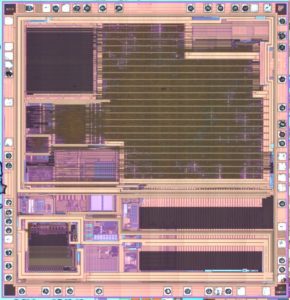Crack MCU ATtiny13A Code
Crack MCU ATtiny13A and extract IC code out from its flash and eeprom memory can help engineer to recover MCU firmware from original Microcontroller ATtiny13A and the file will be heximal or binary;

Crack MCU ATtiny13A and extract IC code out from its flash and eeprom memory can help engineer to recover MCU firmware from original Microcontroller ATtiny13A and the file will be heximal or binary
The MCU ATTINY13A devices have a 10-bit Program Counter (PC) capable of addressing a 1024 x 12 program memory space. Only the first 512 x 12 (0000h-01FFh) for the MCU ATTINY13A are physically implemented (see Figure 4-2). Accessing a location above these boundaries will cause a wraparound within the first 512 x 12 space (MCU ATTINY13A).
The effective Reset vector is at 0000h (see Figure 4-2). Location 01FFh (PIC10F202/206) contains the internal clock oscillator calibration value. This value should never be overwritten . As a program instruction is executed, the Program Counter (PC) will contain the address of the next program instruction to be executed. The PC value is increased by one every instruction cycle, unless an instruction changes the PC with same process as PIC18F2439 heximal MCU cracking
For a GOTO instruction, bits 8:0 of the PC are provided by the GOTO instruction word. The Program Counter Low (PCL) is mapped to PC<7:0>.
For a CALL instruction, or any instruction where the PCL is the destination, bits 7:0 of the PC again are provided by the instruction word. However, PC<8> does not come from the instruction word, but is always cleared (Figure 4-5) when Crack MCU attiny861 flash.
Instructions where the PCL is the destination, or modify PCL instructions, include MOVWF PC, ADDWF PC and BSF PC,5. The PC is set upon a Reset, which means that the PC addresses the last location in program memory (i.e., the oscillator calibration instruction). After executing MOVLW XX, the PC will roll over to location 0000h and begin executing user code.
Tags: mcu crack software archive,mcu crack software binary,mcu crack software code,mcu crack software content,mcu crack software data,mcu crack software eeprom,mcu crack software file,mcu crack software firmware,mcu crack software heximal,mcu crack software information,mcu crack software memory,mcu crack software program

